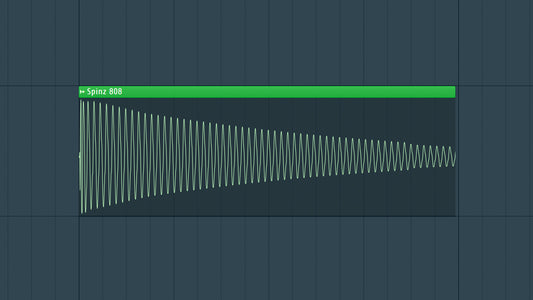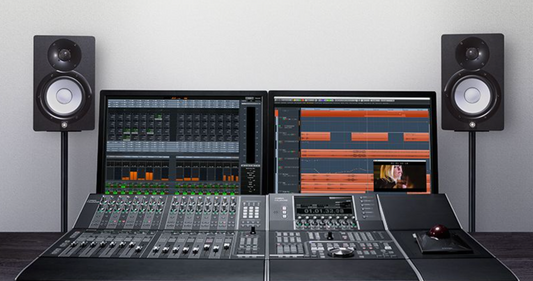Introduction
This is one of the most boring things I have ever learned about music production, but it is super important. In the intricate world of music production, where every nuance matters, dithering plays a major role in maintaining audio fidelity. Dithering is a subtle yet essential process that impacts the final outcome of your music. In this blog, I will explore what dithering is, its importance in the digital audio realm, and why it's a crucial consideration for music producers seeking optimal sound quality.
DOWNLOAD 30+ FREE SAMPLE PACKS - CLICK HERE!

1. Decoding Dithering: A Fundamental Concept
Definition:
Dithering is a technique used in digital audio processing to introduce low-level noise intentionally. This noise, known as dither, helps mitigate the potential negative effects of quantization errors that can occur when reducing the bit depth of audio signals.
2. Understanding Quantization and Bit Depth
Quantization:
- In digital audio, quantization is the process of representing continuous analog signals with discrete digital values. The bit depth determines the precision of this representation.
Bit Depth:
- Bit depth refers to the number of bits used to represent each sample in a digital audio signal. Higher bit depth provides more precision, allowing for a greater dynamic range and detail.
3. The Role of Dithering in Digital Audio
Quantization Errors:
- When reducing the bit depth of an audio signal, quantization errors may occur. These errors can manifest as distortion or artifacts in the final output, particularly in low-level signals.
Dithering as a Solution:
- Dithering introduces controlled noise during the quantization process. This noise helps distribute quantization errors more evenly, minimizing audible artifacts and preserving the integrity of the audio signal.
4. Types of Dither: Noise Shaping
Noise Shaping:
- Noise shaping is a technique often used in conjunction with dithering. It involves shaping the frequency distribution of the dither noise to minimize its perceptual impact on the audio signal.
High-Pass TPDF Dither:
- Triangular Probability Density Function (TPDF) is a common type of dither noise. High-pass TPDF dithering focuses the noise energy in higher frequencies, making it less noticeable in the audible range.
5. Dithering and Low-Level Signals
Low-Level Signal Enhancement:
- Dithering is especially crucial when working with low-level signals or during processes that involve reducing the bit depth, such as mixing, mastering, or exporting audio files.
Maintaining Transparency:
- Dithering helps maintain transparency in quiet passages of a recording, ensuring that subtle details and nuances are preserved, even in the presence of quantization errors.
6. Dithering in the Digital Audio Workflow
Recording and Tracking:
- When recording at high bit depths, dithering is typically unnecessary. However, during the final export or mastering stages, where bit depth reduction may occur, dithering becomes crucial.
Mixing and Signal Processing:
- Dithering may not be as critical during the mixing process, where maintaining a higher bit depth is advantageous. Yet, it becomes essential when exporting the final mix to a lower bit-depth format.
7. Debunking Dithering Myths: Separating Fact from Fiction
Myth: Dithering is Only for Low Bit Depths
- Fact: Dithering is beneficial even at higher bit depths, as it helps distribute quantization errors more evenly and maintains audio transparency.
Myth: Dithering Adds Unwanted Noise
- Fact: Dithering introduces controlled noise, but when implemented correctly, it remains inaudible and serves to improve the overall sound quality.
8. Dithering Best Practices
Apply Dither as the Last Step:
- Always apply dither as the final step before reducing bit depth, whether it's during the export process or when converting files to a lower bit depth format.
Choose the Right Type and Amount:
- Select an appropriate type of dither (e.g., TPDF) and use the recommended amount based on the target bit depth. Applying too much dither can be counterproductive.
9. Auditioning Dither: A Critical Step
Critical Listening:
- Before finalizing your mix or mastering, critically listen to the audio with and without dithering applied. Ensure that any potential artifacts are inaudible or minimal.
DOWNLOAD 30+ FREE SAMPLE PACKS - CLICK HERE!
Conclusion
As a music producer, adding dithering into your workflow makes sure that the subtleties of your music remain intact, even in the face of bit-depth reduction. It's a tool that when applied with care and precision, adds to the transparency and fidelity of your audio. So, embrace the art of dithering, and make your music have more clarity and excellence. Happy producing!




